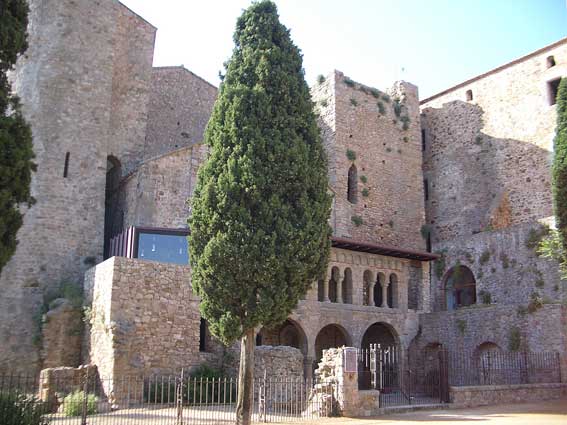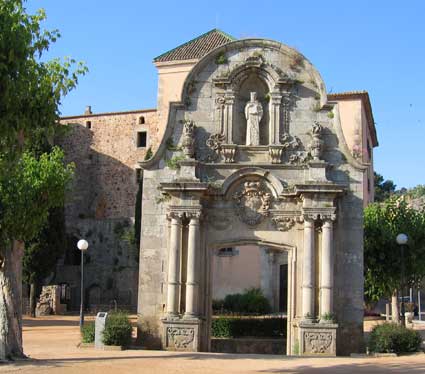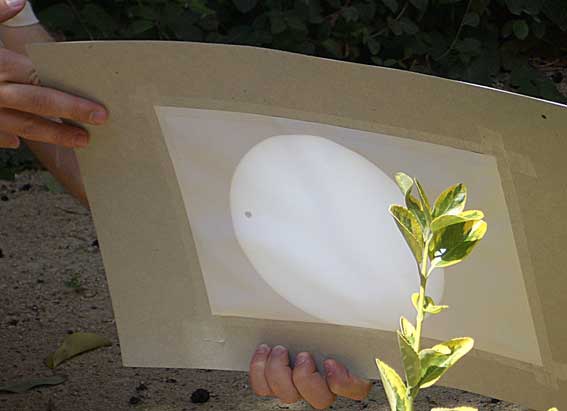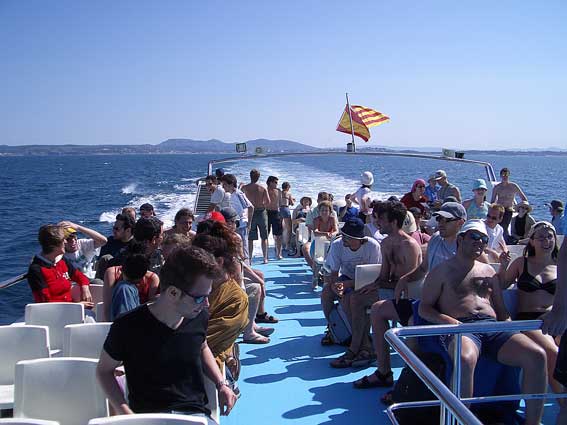No way to escape a walk back to the hotel after lunch since no transport was offered. However, with a little courage it was possible to walk along a beautiful path following the coast and offering scenic sea views.
The free time hours were spent strolling or running along beautiful tracks along the sea, swimming in the swimming pool or in the sea, practicing “farniente” or playing volleyball on the beach. Led by Mikko Voutilainen the most courageous of the students even tempted the “Via Ferrata” climbing the cliffs close to the hotel. “Via Ferrata” is an Italian expression which translates into “iron way” and stands for climbing routes with fixed climbing aids like wire ropes, rungs, pegs, ladders, and bridges. The origin of Via Ferrata is the Italian Dolomites, but this time the concept had been taken to the Spanish cliffs.
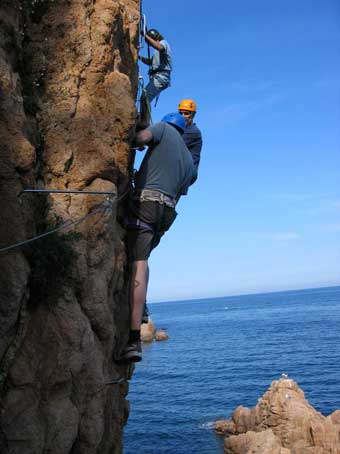
Via Ferrata in Sant Feliu
After the free-time at about 6:30 p.m. we all reconvened on the terrace around the swimming pool for a coffee break before going to the Discussion Sessions which were held in different rooms at the Hotel, starting at 7:00 p.m. and lasting until about 8:15 - 8.30
This was immediately followed by delicious buffet style dinners with a great variety of courses and served in the large dining room offering a nice sea view.
During the “after dinner sessions” the participants were happily gathering on the terrace having a lot of fun, music, songs, and big loud laughs which sometimes could be a little disturbing for the rare “early sleepers”
A very special event.
Not only was the school special, but it also took place during a very rare astronomic event, namely the passage of Venus in front of the Sun. Juan had organized a telescope, and with the image projected onto a screen Venus could easily be seen.
.
Poster Session
The students displayed their work in the form of posters on a special evening session the first week. The posters, of very high quality both technically and in content, were put up on display boards, and every day, the hotel staff was setting up the boards as a labyrinth on the terrace by the swimming pool. Due to the quality of the posters and the nice and persistent work of the staff, the posters were kept displayed for the remaining part of the school.
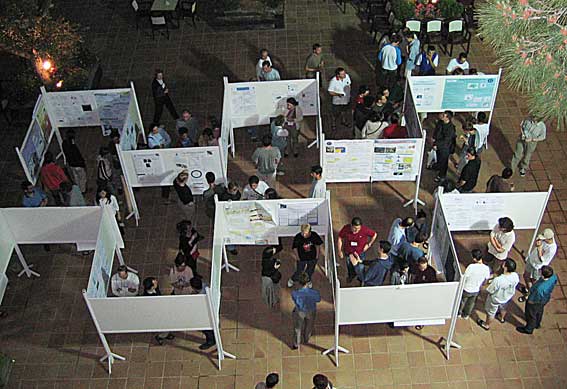
Poster Labyrinth
Back to Top
EXCURSIONS
Three excursions were organized during the school. The first Wednesday afternoon was a visit to Gerona, a walled city of Roman origin, located at a strategic point on the route between the Pyrenees and Barcelona. It boasts a medieval ensemble of great importance and interest, where narrow streets and spectacular monuments harmoniously combine.
The centre of the city is determined by the layout of the old quarter, which followed the borders of the ancient Roman city. In this area we find the old Benedictine monastery of Sant Pere de Galligants, the wall-top promenade, opened in 1985, the Sant Feliu church and the Arab Baths, which date from the 12th century. On both sides of La Força street lays the Jewry, one of Girona's most important tourist attractions.
The cathedral of Girona is the province's most important Gothic monument. The cathedral and its treasures symbolize the dominant role of the Church in the Middle Ages. The shrine was built between the 14th and 17th centuries on various successive religious buildings. Its most salient feature is the immensity of its single Gothic nave, the construction of which was an almost unimaginable challenge for the period's master builders. Indeed, although originalIy three naves were planned, it was finally decided to build a single one nearly 23 metres wide - perhaps the broadest Gothic nave ever built.
On Sunday 6 June a whole day excursion was organized to Barcelona.
Barcelona, Capital of Catalonia is the most cosmopolitan and economically most active city in the country. It has always proved its will to be modern, to follow the latest international tendencies or even be ahead of them. To the tourist this is evident especially in its architecture, which so well reflects the general approach to life in this always pulsating city. For general info see http://www.red2000.com/spain/barcelon/
Barcelona has been a center of Modernist architecture and is distinguished especially by the works of the genial Antoni Plàcid Gaudí i Cornet (1852 - 1926), one of Spain's most prolific and arguably greatest architect. See http://www.red2000.com/spain/barcelon/gaudi.html
The excursion started in Parc Güell, a fascinating scenario of gardens and over-dimensional architectonic forms which seem to be born by the ground. Gaudí created an equilibrium that usually exists only in nature, but never in architecture.
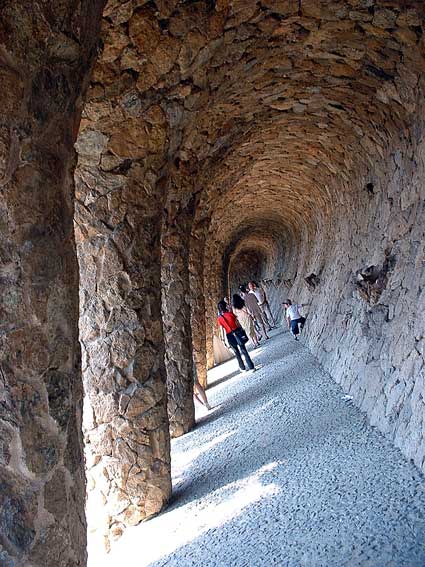
From Parc Güell
Some of the students profited from the beautiful architecture and quiet atmosphere of the park to recover a little from the night before.
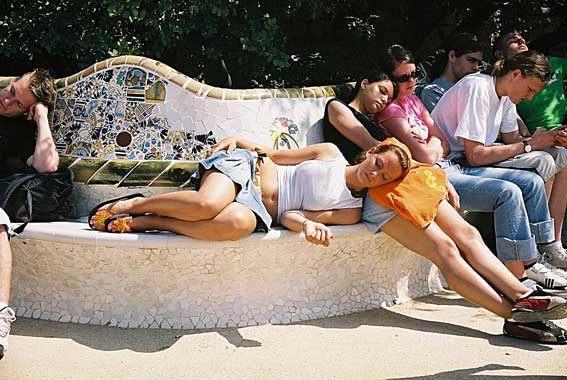
A multi use Gaudi monument
The next stop was the "Sagrada Familia"
This great cathedral, inspired by gothic style and yet a landmark of modern architecture, is in reality not much more than a facade. Gaudí died before he could finish his biggest and most beloved project, with galleries that should have room for 1500 singers, 700 children and 5 organs.
The construction work is now back on its tracks, but in view of the enormity of the work the question remains if the city of Barcelona will ever complete this monumental work
The visit continued to Casa Batllo, another futurist Gaudi work, with no single straight line at its front. Even the walls are curved and seem to be covered by leather.
See also http://www.bcn.es/english/laciutat/barcelona/
At the end of the day the participants met for dinner at Pueblo Español, built for the World Exposition of 1929, and with buildings representing all the architectonic styles typical for Spain. In 1992 the Olympic Games took place here.
During Dinner we enjoyed an evening lecture on the Spanish project for a Synchrotron light source. The talk, which was given by Joan Bordas, Director of the CEELLS
Consortium. (Construccion, Equipamiento y Explotacion del Laboratorio de Luz de Sincrotron), was very interesting even though the conditions for such a talk in the restaurant were not ideal.
On the last Wednesday afternoon a boat excursion was organized. The bus ride from the hotel to L’Escala was not without problems for a few of the students. However, only one student was left behind when the large and very fast catamaran took off into the “Golf de Roses”.
From the boat we enjoyed the view of Rose, the famous "Cap de Creus", "Badia de Culpi" and Cadaqués, where Salvador Dali had his home in Portlligat.
The boat sometimes went very close to the shore so that we could enjoy the sight of hidden coves and nice rock formations. The turning point of the trip was the French border at “Cap de Cervera”, and some of the students with only one entry visa into Spain were happy that the border was not crossed.
